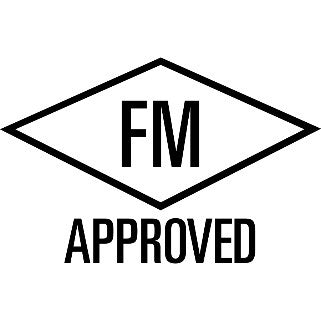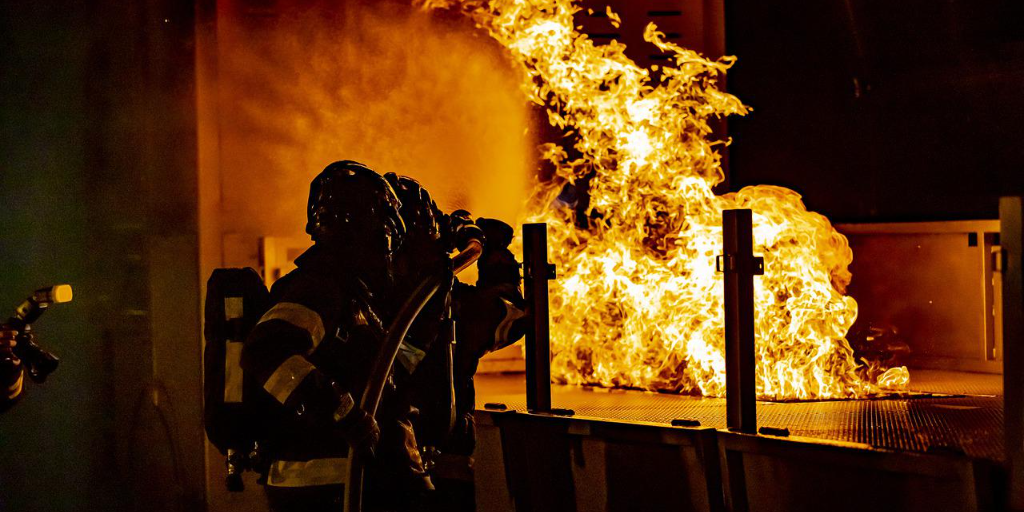When working in hazardous locations (HazLoc) you’ve probably heard the term Intrinsic Safety. Hazardous locations are environments where fire or explosion may exist from flammable gas, vapors, dust, and liquids. It’s important to use Intrinsically safe communication equipment in these environments to limit the risk of fire or explosion.
Many oil refiners, firefighters, United States Coast Guard, processing factories and plants, who can experience the risks of fire or explosion, use Intrinsically Safe equipment.
In this guide, we'll cover some most commonly asked questions about intrinsic safety.
- What does intrinsically safe mean?
- Intrinsically Safe Classifications
- Who certifies intrinsically safe?
- How to Know if a Product is Intrinsically Safe
- What is the certification process for intrinsically safe?
- What types of intrinsically safe communication equipment are there?
What Does Intrinsically Safe Mean?
Intrinsically safe (IS) is defined as communication equipment that does not release sufficient electrical or thermal energy under certain operating conditions that can cause the ignition of a specific hazardous mixture of air. An IS rating is required for equipment to be used in Division 1 environments.
Intrinsically safe means it is required for you to process equipment (like two-way radios and accessories) wherever there is an area where flammable gasses, vapors, or liquids exist, like a fire. Just because an accessory may be waterproof, or gas-proof does not mean it is intrinsically safe.
Testing is done by independent laboratories to ensure communications equipment is certified intrinsically safe.
Intrinsically Safe Classifications
It’s important to understand which classifications your equipment falls under rather than knowing just “Intrinsically Safe” or “UL Laboratories”. Understand where you can and cannot use your radio under what conditions and how well your equipment is protected according to each class. The certification process for intrinsically safe falls into 3 classifications. Classes, divisions, and groups.
Class and Groups
- Class I: Flammable gasses, vapors, and liquids
- Group A: Acetylene and equivalent gas groups
- Group B: Hydrogen and equivalent gas groups
- Group C: Ethylene and equivalent gas groups
- Group D: Methane and equivalent gas groups
-
Class II: Combustible Dust
- Group E: Conductive dust
- Group F: Combustible carbon dust (above ground only)
- Group G: Grain Dust
-
Class III: Ignitable fibers and flyings
- No sub-group for Class III.
Divisions
- Division 1 environment is an area where ignitable gases, vapors, or liquids can exist all the time under normal operating conditions.
- Division 2 environment is an area where flammable gases, vapors, or liquids are not likely to exist.
Who Certifies Intrinsically Safe?
Many laboratories across the world develop standards that test a product to determine if it meets intrinsically safe. Certifying agencies will allow manufacturers to use a label on their products that show they follow these certain standards. This makes it easier to determine if a product is intrinsically safe. Here is a list of companies that will test your products for intrinsically safe.
- Factory Mutual (FM)
- Underwriters Laboratories (UL)
- MET Labs
- SGS Labs
In Canada, the Canadian Standards Association certified intrinsically safe as well as CENELEC, in the EU. The certification process in the United States is different than that in Europe but the two mostly have the same results.
The IS approval rating, in the United States and Canada organizes hazardous areas by classes, divisions, and groups. For example, Land Mobile Radios (LMRs) fall under FM 3610 or 3640. The EU (European Union) applies a classification system based on zones known as ATEX certifications.
Standards agencies all across the world work together so that intrinsically safe equipment manufactured in one county can later be approved for use in another county without the need for duplicate testing and documentation.


How to Identify Intrinsically Safe Certified Radios?
Any equipment that has been certified intrinsically safe will have a specific label typically with the certifying agency logo like FM or UL. Look for the label on the back side of the radio or battery. Certifying agencies allow manufacturers to use a label on their products to show they follow these certain standards. Every label will have the approved Division, Class, and Group.
For instance, the Motorola radio pictured below has an FM Approved sticker behind the battery compartment telling us that this has been tested and approved for intrinsic safety.

FM Approved will have GREEN text and logo on their label. Other laboratories like UL, will have a WHITE text and logo on their label. Radios without a label from a certifying agency, are most likely not intrinsically safe and should not be used as such.
Back in 2016, Motorola no longer produced two-way radios under Factory Mutual standard and started accreditations with Underwriters Laboratories (UL). If your older Motorola radio is certified under FM, don’t worry, it’s still Intrinsically Safe and you can operate with both UL and FM-approved radios in your fleet.
What is the Certification Process for Intrinsically Safe?
Many laboratories test various products to be labeled intrinsically safe and therefore can be used in hazardous locations. Tests are carried out to analyze if each circuit, that may cause a spark or any thermal effect, some of which are stored in normal conditions or fault conditions, can cause ignition or not. Most of these first tests can be completed at a desk by experts of intrinsically safe standards.
The next part of the test is known as a spark test. These explosive gases are mixed and put into the product and wires are connected to cadmium disks. It must “make or break” the circuit 1600 times to check if the energy in the circuit can cause an ignition or not.
Other tests may be applied to ensure a product is intrinsically safe including, thermal endurance to heat and cold, drop test, IP test, battery short circuit test, small component ignition test, and more.
Companies can apply to have their products certified intrinsically safe by various laboratories and agencies. Waveband Communications, for example, has its two-way radio batteries certified intrinsically safe by FM Approvals and SGS Labs. Each certification involves a different process and steps required to follow.
What Types of Intrinsically Safe Communication Equipment are There?
Typically, intrinsically safe two-way radio accessories include batteries, two-way radios, chargers, audio accessories, and speaker microphones. Certain flashlights and other apparatuses can be designed for IS. Equipment with an IS certification is more expensive than equipment without. This is due to obtaining and maintaining the approval process of the certification rather than the components.

Only using Intrinsically Safe accessories ensures you a safe work environment and protects against explosions that could cause injuries or fatalities. Having an intrinsically safe accessory or radio doesn’t affect its performance compared to a non-certified one. They are just designed to withstand heat and not cause a spark.
Firefighters need to use intrinsically safe equipment to limit the risk of explosion while around a fire or hazardous areas. This improves the safety of you and your department, giving you one less thing to worry about during emergencies.
Wrap Up
That should have given you a better understanding of Intrinsic Safety. Remember it's important and required to use certified IS equipment in areas where a risk of explosion or fire is present. Look for the label and learn what each classification means to see how well your device is protected.


